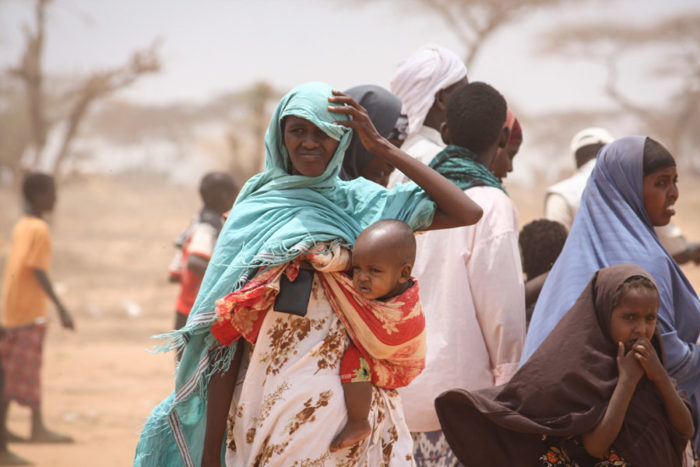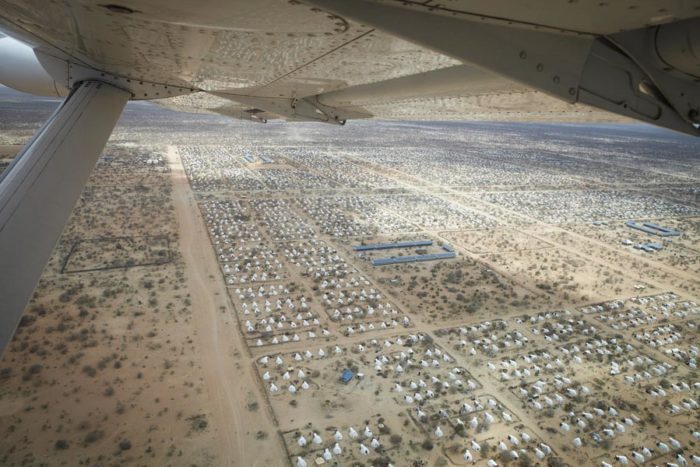
Nobody wants to live in a refugee camp.
Through my reporting, I’ve visited camps in East Africa, South Asia and The Middle East, and they are always desperate places full of people who have run out of options.
But that last safety net may be yanked for hundreds of thousands of refugees in East Africa. The Kenyan government has announced its plans to close the Dadaab refugee camp, citing, among other reasons, security concerns in the wake of terrorist attacks by al-Shabab, a Somali-based terrorist group.
Considered to be the largest in the world, the Dadaab camp, population 300,000-plus, is home to a predominantly Somali population escaping civil war and violence. And as international aid organizations and governments scramble to respond to a potential humanitarian crisis, East African communities in the Pacific Northwest worry for family who may be forced to return to an unstable Somalia.
“Just today, during prayers, I had people come up talking about it because they have family members in the camp. I have family members in the camp,” says Omar Mumin, who runs Global Aid Against Poverty, a local nonprofit that sends food to refugee camps in Kenya.
Mumin, who also works as a King County interpreter and as an Uber driver, left Somalia and came to the U.S. via a Kenyan refugee camp in the 1990s. He says these camps are rough places that lack food, sanitation and security, but that they are crucial to the region.
“For a person who has never been to a refugee camp, if you went, you would be shocked,” says Mumin, who last year helped raise more than $50,000 to support refugee families in East Africa. “But the people who are there, they are enjoying it, because they have nowhere else to go — because the alternative is going back to war.”

This is not the first time Kenya has threatened to close refugee camps, and Mumin and others in the local Somali community say it’s hard to separate the political rhetoric from reality.
“It’s a significant announcement, but let’s not be alarmed, because Kenya has said they would close it [Dadaab] in the past,” says Aynab Abdirahman, a community activist and former chair of the Washington state Refugee Advisory Council. He speculates Kenya may be trying to pressure the international community to share responsibility for the country’s half a million refugees.
That may be challenging, given a growing global refugee crisis (almost 60 million worldwide, according to the U.N. Refugee Agency) and a political climate that blames refugees for everything from economic instability to terrorism. And Kenya may be more serious about camp closures this time, saying it has gone so far as to disband the country’s Department of Refugee Affairs.
“It’s a very complex issue, and it’s easy to scapegoat the refugees themselves. But the refugees are just victims of circumstance,” says Abdirahman, who worries that abandoning Kenya’s refugees would further destabilize the region. “Sending them back to Somalia is definitely not the solution. You’re just taking one problem and making a much larger problem.”
Abdirahman and Mumin both acknowledge refugee camps themselves are not solutions. The two are especially concerned about longstanding camps, where entire generations of children are growing up marginalized and displaced. But they believe the international community, including the Somali government, must come together to find solutions, whether it’s working to stabilize Somalia, integrate refugees into Kenyan society or resettle them to other countries.
In the meantime, they say, refugees deserve to be kept safe.
“The importance of the refugee camp is that it’s a safe haven for someone who is running away from war,” says Mumin. “For someone who has lost everything in life.”
Someone who, pending Kenya’s follow-through on camp closures, may tragically lose everything again.

